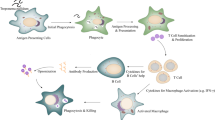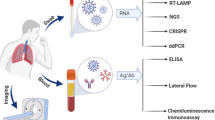Abstract
Males who have sex with men (MSM) are considered at high risk of blood-borne and sexually transmitted infections (STIs), mainly due to the practice of unsafe sex, often combined with drug use and needle-sharing. A cross-sectional study was designed for the detection of genital mycoplasmas during the period from March 2009 to May 2010 in Jiangsu province. This work was approved by the Research ethics Committee of Jiangsu Centers for Diseases Prevention and Control (CDC), and written consent was obtained from all participants. In total, 243 human immunodeficiency virus-1 (HIV-1)-infected MSM were screened in this study. Over half of them reported a history of sexual activity with females (65.0 %), and 26.3 % reported a history of sexually transmitted diseases (STDs) other than HIV. 44.0 % of patients were in the first 2 years of their HIV infection, and 72.4 % were still in HIV progression. Of the 243 analyzed samples, all were positive for at least one kind of mycoplasma. The infection rates of Mycoplasma genitalium, M. fermentans, M. penetrans, and M. pirum were 25.5, 9.9, 2.5, and 18.5 %, respectively. The M. genitalium infection was associated with a history of sexual activity with females, and those who had sex with females showed higher infection rates. Six M. penetrans-positive patients were still in HIV infection progression and did not receive highly active antiretroviral therapy (HAART). Men who perform this particular behavior are at higher risk of Mycoplasma infections. Further molecular and epidemiological cohort studies with larger populations are needed in order to identify the role of Mycoplasma infections in HIV-1-infected MSM.
Similar content being viewed by others
References
Rajabali A, Moin O, Ansari AS, Khanani MR, Ali SH (2009) Communicable disease among displaced Afghans: refuge without shelter. Nat Rev Microbiol 7:609–614
Bachmann LH, Grimley DM, Waithaka Y, Desmond R, Saag MS, Hook EW 3rd (2005) Sexually transmitted disease/HIV transmission risk behaviors and sexually transmitted disease prevalence among HIV-positive men receiving continuing care. Sex Transm Dis 32:20–26
Scheer S, Chu PL, Klausner JD, Katz MH, Schwarcz SK (2001) Effect of highly active antiretroviral therapy on diagnoses of sexually transmitted diseases in people with AIDS. Lancet 357:432–435
Do AN, Hanson DL, Dworkin MS, Jones JL; Adult and Adolescent Spectrum of HIV Disease Project (2001) Risk factors for and trends in gonorrhea incidence among persons infected with HIV in the United States. AIDS 15:1149–1155
Aberg JA, Kaplan JE, Libman H, Emmanuel P, Anderson JR, Stone VE et al (2009) Primary care guidelines for the management of persons infected with human immunodeficiency virus: 2009 update by the HIV Medicine Association of the Infectious Diseases Society of America. Clin Infect Dis 49:651–681
Benson CA, Kaplan JE, Masur H, Pau A, Holmes KK; CDC; National Institutes of Health; Infectious Diseases Society of America (2004) Treating opportunistic infections among HIV-infected adults and adolescents: recommendations from CDC, the National Institutes of Health, and the HIV Medicine Association/Infectious Diseases Society of America. MMWR Recomm Rep 53:1–112
van der Snoek EM, de Wit JBF, Götz HM, Mulder PGH, Neumann MHA, van der Meijden WI (2006) Incidence of sexually transmitted diseases and HIV infection in men who have sex with men related to knowledge, perceived susceptibility, and perceived severity of sexually transmitted diseases and HIV infection: Dutch MSM-Cohort Study. Sex Transm Dis 33:193–198
Johnson AM, Mercer CH, Erens B, Copas AJ, McManus S, Wellings K et al (2001) Sexual behaviour in Britain: partnerships, practices, and HIV risk behaviours. Lancet 358:1835–1842
Balaji AB, Bowles KE, Le BC, Paz-Bailey G, Oster AM; NHBS Study Group (2013) High HIV incidence and prevalence and associated factors among young MSM, 2008. AIDS 27:269–278
Moncada J, Schachter J, Liska S, Shayevich C, Klausner JD (2009) Evaluation of self-collected glans and rectal swabs from men who have sex with men for detection of Chlamydia trachomatis and Neisseria gonorrhoeae by use of nucleic acid amplification tests. J Clin Microbiol 47:1657–1662
Mimiaga MJ, Helms DJ, Reisner SL, Grasso C, Bertrand T, Mosure DJ et al (2009) Gonococcal, chlamydia, and syphilis infection positivity among MSM attending a large primary care clinic, Boston, 2003 to 2004. Sex Transm Dis 36:507–511
Kent CK, Chaw JK, Wong W, Liska S, Gibson S, Hubbard G et al (2005) Prevalence of rectal, urethral, and pharyngeal chlamydia and gonorrhea detected in 2 clinical settings among men who have sex with men: San Francisco, California, 2003. Clin Infect Dis 41:67–74
Whittington WLH, Collis T, Dithmer-Schreck D, Handsfield HH, Shalit P, Wood RW et al (2002) Sexually transmitted diseases and human immunodeficiency virus-discordant partnerships among men who have sex with men. Clin Infect Dis 35:1010–1017
Jurkovic DA, Newman JT, Balish MF (2012) Conserved terminal organelle morphology and function in Mycoplasma penetrans and Mycoplasma iowae. J Bacteriol 194:2877–2883
Blanchard A, Montagnier L (1994) AIDS-associated mycoplasmas. Annu Rev Microbiol 48:687–712
Perez G, Skurnick JH, Denny TN, Stephens R, Kennedy CA, Regivick N et al (1998) Herpes simplex type II and Mycoplasma genitalium as risk factors for heterosexual HIV transmission: report from the heterosexual HIV transmission study. Int J Infect Dis 3:5–11
Feng SH, Lo SC (1994) Induced mouse spleen B-cell proliferation and secretion of immunoglobulin by lipid-associated membrane proteins of Mycoplasma fermentans incognitus and Mycoplasma penetrans. Infect Immun 62:3916–3921
Shimizu T, Kida Y, Kuwano K (2004) Lipid-associated membrane proteins of Mycoplasma fermentans and M. penetrans activate human immunodeficiency virus long-terminal repeats through toll-like receptors. Immunology 113:121–129
Ainsworth JG, Easterbrook PJ, Clarke J, Gilroy CB, Taylor-Robinson D (2001) An association of disseminated Mycoplasma fermentans in HIV-1 positive patients with non-Hodgkin’s lymphoma. Int J STD AIDS 12:499–504
Ballard RC, Fehler HG, Htun Y, Radebe F, Jensen JS, Taylor-Robinson D (2002) Coexistence of urethritis with genital ulcer disease in South Africa: influence on provision of syndromic management. Sex Transm Infect 78:274–277
Cohen CR, Manhart LE, Bukusi EA, Astete S, Brunham RC, Holmes KK et al (2002) Association between Mycoplasma genitalium and acute endometritis. Lancet 359:765–766
Manhart LE, Mostad SB, Baeten JM, Astete SG, Mandaliya K, Totten PA (2008) High Mycoplasma genitalium organism burden is associated with shedding of HIV-1 DNA from the cervix. J Infect Dis 197:733–736
da Costa FAM, da Silva RC, Arruda LB, Montanheiro P, da Silva Duarte AJ, Casseb J (2010) Prevalence of Mycoplasma genitalium among HIV-infected men in São Paulo city detected by realtime polymerase chain reaction. Int J STD AIDS 21:23–25
Ferrer-Navarro M, Gómez A, Yanes O, Planell R, Avilés FX, Piñol J et al (2006) Proteome of the bacterium Mycoplasma penetrans. J Proteome Res 5:688–694
Grau O, Tuppin P, Slizewicz B, Launay V, Goujard C, Bahraoui E et al (1998) A longitudinal study of seroreactivity against Mycoplasma penetrans in HIV-infected homosexual men: association with disease progression. AIDS Res Hum Retroviruses 14:661–667
Wang RYH, Shih JWK, Grandinetti T, Pierce PF, Hayes MM, Wear DJ et al (1992) High frequency of antibodies to Mycoplasma penetrans in HIV-infected patients. Lancet 340:1312–1316
Gerlic M, Horowitz J, Horowitz S (2004) Mycoplasma fermentans inhibits tumor necrosis factor alpha-induced apoptosis in the human myelomonocytic U937 cell line. Cell Death Differ 11:1204–1212
Into T, Kiura K, Yasuda M, Kataoka H, Inoue N, Hasebe A et al (2004) Stimulation of human Toll-like receptor (TLR) 2 and TLR6 with membrane lipoproteins of Mycoplasma fermentans induces apoptotic cell death after NF-κB activation. Cell Microbiol 6:187–199
Ibeh BO, Obidoa O, Uzoegwu PN (2008) High plasma activity of endogenous antioxidants protect CD4+ T-cells in HIV-serodiscordant heterosexual partners in a Nigerian population. Int J STD AIDS 19:536–540
Acknowledgments
This work was supported by the National Natural Science Foundation of China (Project No. 30872156) and the Fundamental Research Funds for the Central Universities (Project No. CXZZ12_0121). The assistance of the STD and AIDS Department of the Jiangsu Province CDC was gratefully acknowledged.
Conflict of interest
The authors declare that they have no conflict of interest.
Author information
Authors and Affiliations
Corresponding author
Rights and permissions
About this article
Cite this article
Wu, JR., Wang, B., Chen, LS. et al. Alarming incidence of genital mycoplasmas among HIV-1-infected MSM in Jiangsu, China. Eur J Clin Microbiol Infect Dis 33, 189–195 (2014). https://doi.org/10.1007/s10096-013-1942-5
Received:
Accepted:
Published:
Issue Date:
DOI: https://doi.org/10.1007/s10096-013-1942-5




